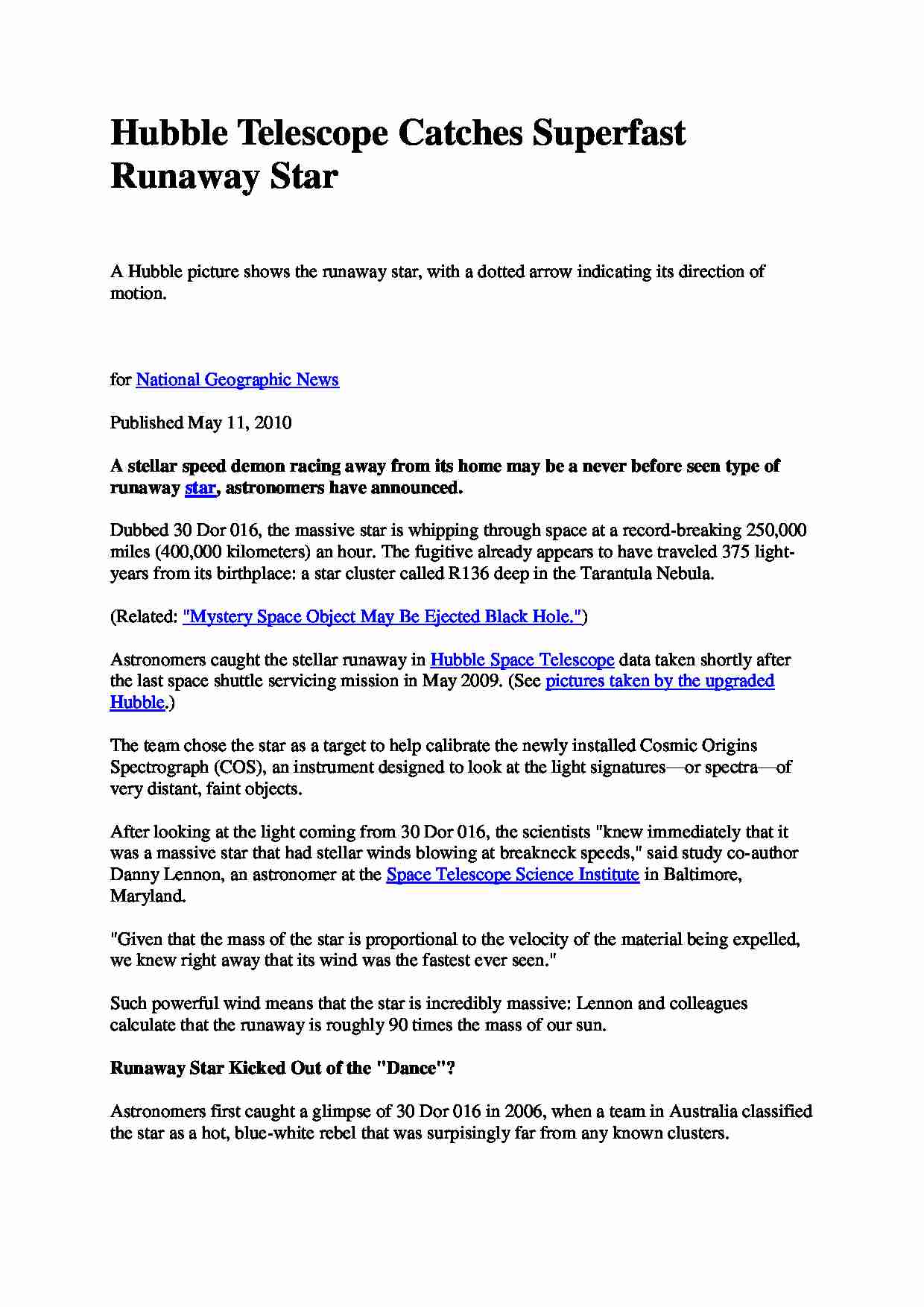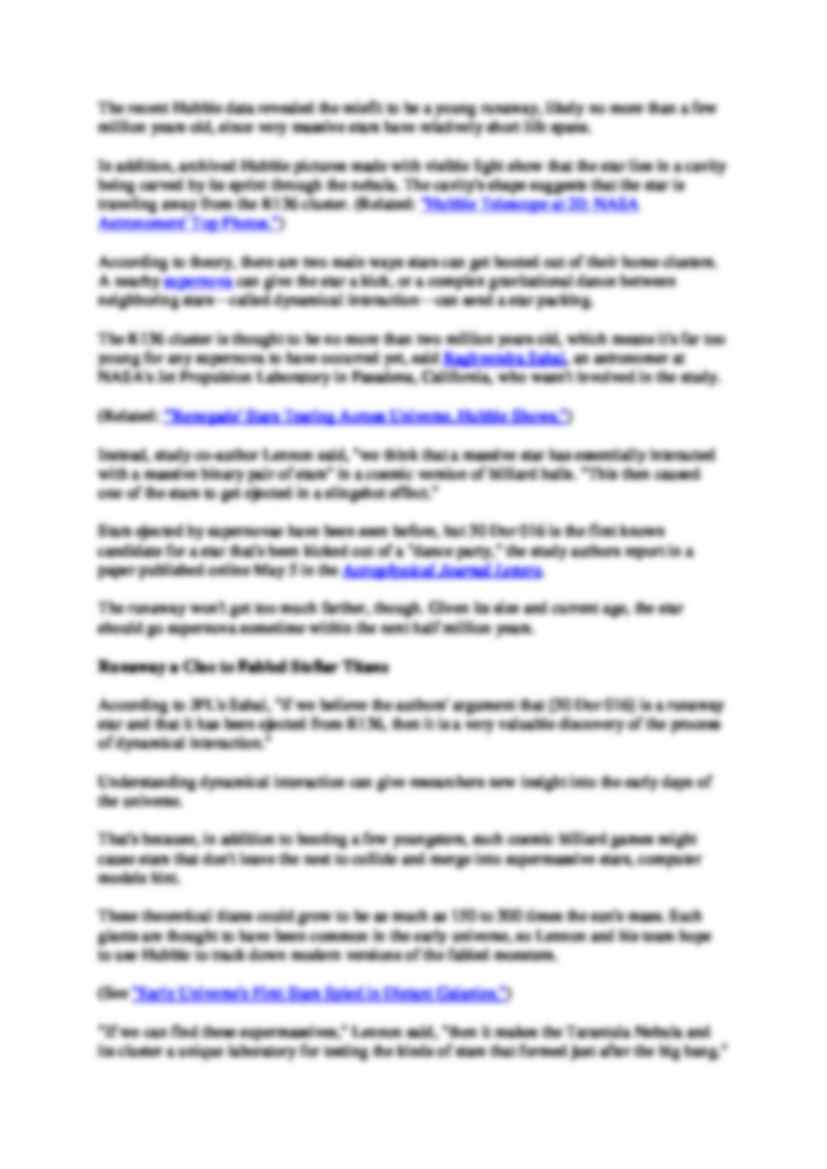To tylko jedna z 2 stron tej notatki. Zaloguj się aby zobaczyć ten dokument.
Zobacz
całą notatkę


Hubble Telescope Catches Superfast Runaway Star A Hubble picture shows the runaway star, with a dotted arrow indicating its direction of motion.
for National Geographic News Published May 11, 2010 A stellar speed demon racing away from its home may be a never before seen type of runaway star , astronomers have announced. Dubbed 30 Dor 016, the massive star is whipping through space at a record-breaking 250,000 miles (400,000 kilometers) an hour. The fugitive already appears to have traveled 375 light-years from its birthplace: a star cluster called R136 deep in the Tarantula Nebula.
(Related: "Mystery Space Object May Be Ejected Black Hole." )
Astronomers caught the stellar runaway in Hubble Space Telescope data taken shortly after the last space shuttle servicing mission in May 2009. (See pictures taken by the upgraded Hubble .)
The team chose the star as a target to help calibrate the newly installed Cosmic Origins Spectrograph (COS), an instrument designed to look at the light signatures—or spectra—of very distant, faint objects.
After looking at the light coming from 30 Dor 016, the scientists "knew immediately that it was a massive star that had stellar winds blowing at breakneck speeds," said study co-author Danny Lennon, an astronomer at the Space Telescope Science Institute in Baltimore, Maryland.
"Given that the mass of the star is proportional to the velocity of the material being expelled, we knew right away that its wind was the fastest ever seen."
Such powerful wind means that the star is incredibly massive: Lennon and colleagues calculate that the runaway is roughly 90 times the mass of our sun. Runaway Star Kicked Out of the "Dance"? Astronomers first caught a glimpse of 30 Dor 016 in 2006, when a team in Australia classified the star as a hot, blue-white rebel that was surpisingly far from any known clusters.
The recent Hubble data revealed the misfit to be a young runaway, likely no more than a few million years old, since very massive stars have relatively short life spans.
In addition, archived Hubble pictures made with visible light show that the star lies in a cavity being carved by its sprint through the nebula. The cavity's shape suggests that the star is traveling away from the R136 cluster. (Related: "Hubble Telescope at 20: NASA Astronomers' Top Photos." )
According to theory, there are two main ways stars can get booted out of their home clusters. A nearby supernova can give the star a kick, or a complex gravitational dance between neighboring stars—called dynamical interaction—can send a star packing.
The R136 cluster is thought to be no more than two million years old, which means it's far too young for any supernova to have occurred yet, said Raghvendra Sahai , an astronomer at NASA's Jet Propulsion Laboratory in Pasadena, California, who wasn't involved in the study.
... zobacz całą notatkę




Komentarze użytkowników (0)